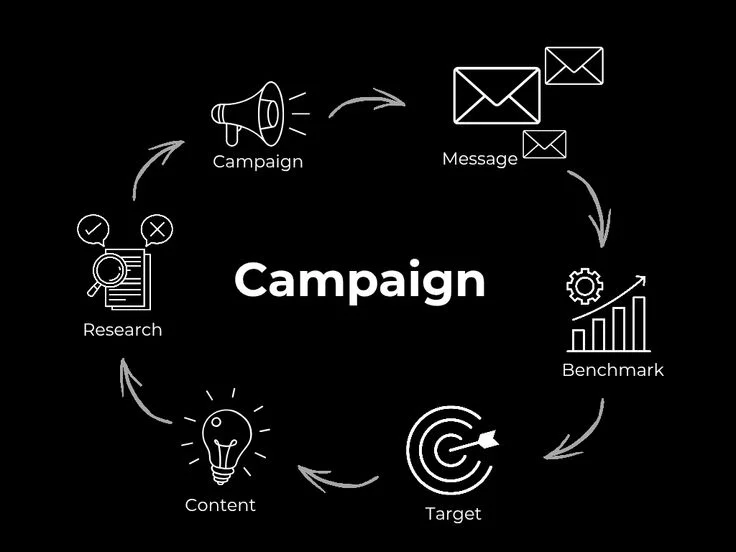Google’s Performance Max campaigns are revolutionizing digital advertising by offering an all-in-one solution that runs across multiple Google properties—including YouTube, Display, Search, Discover, Gmail, and Maps. This unified approach allows advertisers to reach the right audience at the right time, using Google’s AI to optimize performance in real time. However, simply launching a Performance Max campaign isn’t enough to unlock its full potential. Success depends on having a clear, strategic approach that aligns with your business goals.
Whether you’re a beginner or a seasoned advertiser, mastering these Google Ads Performance Max Tips can make a significant difference. Start by setting clear conversion goals and feeding the system high-quality assets—such as strong headlines, engaging images, and compelling videos. Use audience signals to guide the algorithm, and regularly analyze performance data to make informed optimizations.
Don’t forget to segment your campaigns based on product categories or customer behavior for more precise targeting. Ultimately, Performance Max offers unmatched reach and automation, but your input matters. With the right strategy and smart execution, you can boost ROI, improve targeting, and achieve greater efficiency. These Google Ads Performance Max tips are your key to unlocking smarter, more profitable advertising campaigns.
-
Start with Clear Campaign Goals
Before launching a Google Ads Performance Max campaign, it’s vital to clearly define what success looks like for your business—whether that’s generating qualified leads, driving online sales, increasing website traffic, or boosting brand awareness.
One of the most crucial Google Ads Performance Max tips is aligning these specific goals with the correct conversion actions within your Google Ads account. By doing so, you provide Google’s automation with the right signals to optimize performance, allocate budget efficiently, and ensure your campaigns are working toward measurable, high-impact outcomes.

-
Feed the Algorithm With Quality Assets
Performance Max depends extensively on automation to serve your ads across Google’s wide range of platforms. . That’s why one of the most important Google Ads Performance Max tips is to supply high-quality, engaging assets—such as headlines, descriptions, images, and videos.
The more diverse, relevant, and compelling your assets are, the more combinations Google can test to match your ads with user intent. This allows the system to optimize performance dynamically and deliver the best version of your ad to the right audience at the right time, ultimately improving engagement, click-through rates, and overall campaign effectiveness. Quality input drives quality results..
-
Use Audience Signals to Guide Performance
Even though Performance Max campaigns are largely automated, they still allow you to influence targeting by providing audience signals. These signals serve as strategic hints for Google’s AI, helping it identify and reach the most relevant users.
One of the smartest Google Ads Performance Max tips is to include your custom segments, remarketing lists, and customer match data. This helps guide the algorithm toward higher-value users who are more likely to convert.
-
Structure Campaigns Based on Product Categories
If you’re managing an eCommerce brand, one effective Google Ads Performance Max tip is to segment your campaigns by product category or profit margin.
This approach enables more precise budget allocation, easier performance tracking, and tailored optimization for each product group. By doing so, you can identify what’s driving results and scale the most profitable segments more efficiently..
-
Track Conversions Accurately
Performance Max’s effectiveness depends entirely on the quality of data it receives. That’s why one essential Google Ads Performance Max tip is to ensure your conversion tracking is accurately set up, including enhanced conversions and first-party data integrations.
These provide Google’s AI with high-quality, reliable signals, allowing it to optimize campaigns more effectively. For serious advertisers, this step is absolutely non-negotiable for maximizing performance and ROI.
-
Leverage Seasonal Promotions and Ad Extensions
Use promotion extensions, site links, and callouts to spotlight seasonal offers, flash sales, and limited-time deals. These ad assets not only enhance visibility but also create a sense of urgency that can drive faster conversions.
A powerful Google Ads Performance Max tip is to align your creative assets with your promotional calendar. This ensures your ads remain timely, relevant, and compelling throughout the customer journey—helping you capitalize on peak buying periods and boost campaign performance.
-
Monitor Asset Group Performance
While full reporting transparency in Performance Max campaigns is somewhat limited, you can still gain insights into how your asset groups are performing through asset strength ratings and combination reports. These metrics help you identify which headlines, images, descriptions, and videos are resonating most with your audience, allowing you to optimize creative assets for better engagement and conversions.
To know more, explore the “Insights” tab within your Google Ads dashboard. It offers valuable data on audience signals, top-performing assets, and search trends related to your campaigns. You can also run experiments and A/B tests to further refine performance based on data-driven decisions.

-
Use Location and Language Targeting Smartly
Another key Google Ads Performance Max tip is to tailor your campaigns based on geography and language—especially if your business serves multiple regions or markets. Performance Max allows you to set specific targeting by location and language, which gives you the opportunity to customize ad messaging, visuals, and offers for each audience segment.
This approach boosts ad relevance, drives higher user engagement, and leads to better conversion rates. . Localized content resonates more strongly with potential customers, making your campaigns more effective. Taking the time to segment and personalize based on region and language can significantly boost the performance of your ads.
-
Don’t Ignore the Insights Tab
Google provides valuable insights within Performance Max campaigns, including data on search terms, audience segments, and top-performing creatives. One of the lesser-used yet highly effective Google Ads Performance Max tips is to regularly monitor the Insights tab—ideally on a weekly basis. This feature helps you understand how your ads are being matched to user intent and where your conversions are coming from.
By analyzing these insights, you can uncover new keyword opportunities, refine your targeting, and identify which creative assets are driving results. Consistently leveraging this data empowers you to make smarter, faster optimizations that enhance overall campaign performance.
-
Test, Learn, and Scale
Always keep testing—continuous experimentation is essential for achieving long-term success with Performance Max campaigns. . Whether you’re exploring new creatives, audience signals, landing pages, or bidding strategies, the most valuable Google Ads Performance Max tips often come from analyzing your own campaign data. Start with small tests to minimize risk while gaining insights into what resonates best with your target audience.
Track performance closely, learn from both wins and losses, and apply those lessons to scale your efforts strategically. This data-driven approach not only improves results over time but also ensures your campaigns stay agile, competitive, and growth-focused in a changing market.
11. Google Ads Performance Max Tips
To maximize results with Google Ads Performance Max campaigns, start by clearly defining your goals, such as sales or lead generation. Use high-quality creative assets—images, videos, and headlines—that align with your brand. Provide accurate audience signals to guide machine learning, and segment campaigns if you have distinct products or customer types. Regularly monitor asset performance and replace underperforming ones.
Use data-driven attribution and conversion tracking to refine optimization. Allow time for machine learning to stabilize before making changes. Lastly, integrate first-party data like customer lists for better targeting and personalize messaging to enhance engagement and conversion rates.

Conclusion
Whether you’re just getting started with Google Ads or already managing multiple campaigns, these Google Ads Performance Max tips will help you elevate your strategy from beginner to pro. Performance Max is a powerful, AI-driven solution that spans all of Google’s major channels, but to truly harness its potential, you need more than a basic setup—you need a smart, data-informed approach.
From setting clear conversion goals and providing high-quality creative assets to leveraging audience signals and analyzing campaign insights, every element plays a role in driving better results. Continual testing, learning, and refining based on performance data are what set successful advertisers apart. By segmenting campaigns, tailoring content by region, syncing with promotional calendars, and regularly exploring the insights tab, you can unlock deeper optimization opportunities.
When used strategically, Performance Max becomes more than just automation—it becomes a growth engine. Apply these proven tips consistently, and you’ll see measurable improvements in ROI, reach, and efficiency.
Author